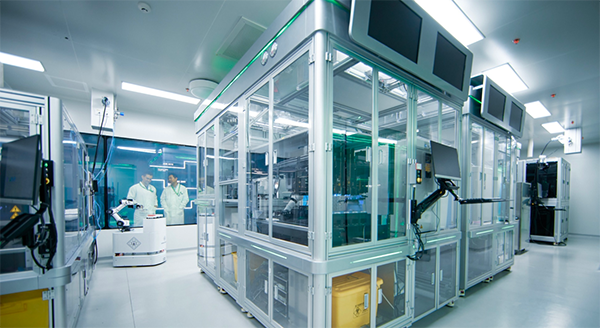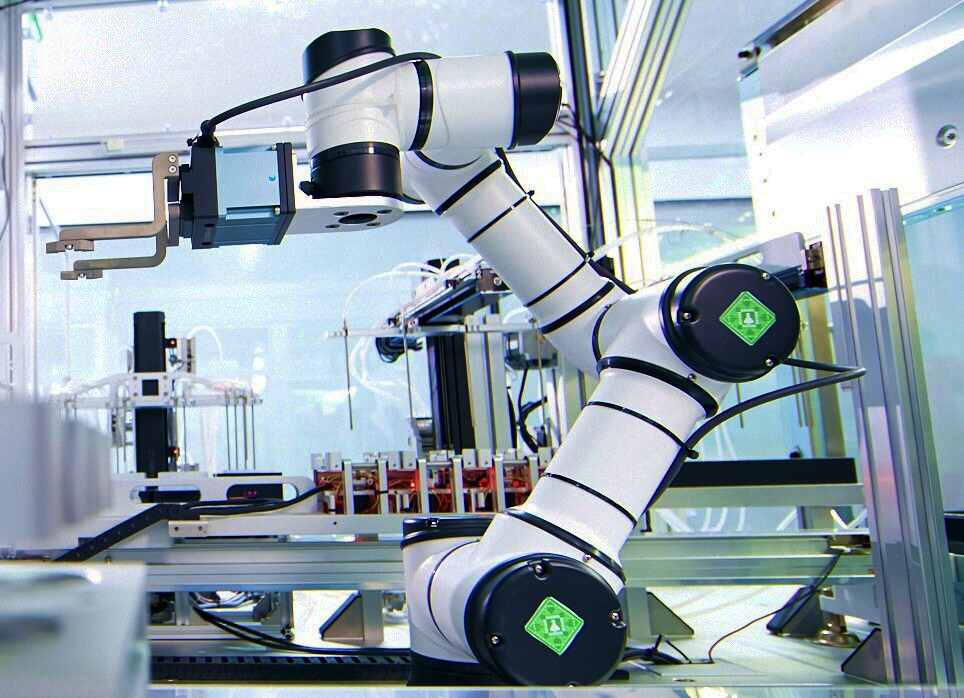
Insilico Medicine
Drug Discovery’s New Universe: Insilico’s Life Star Lab
One-of-a-kind, AI-powered 6th generation robotics lab for drug discovery
“We hope to usher in a new era of biology labs. Insilico’s robotics lab has an AI brain, an automated machine body, and the limbs of various complex robots.
“The AI brain has been trained and verified through Insilico projects and has learned from years of experience collaborating with global pharma companies. The AI brain will propose potential targets and design automated experiments and workflows based on experimental results, and it will also assist in the decision-making of target discovery and identification. “
—Alex Zhavoronkov, PhD,
Founder & CEO Insilico Medicine

It took about 9 years to develop the AI engine,
2 years to plan, and over a year to build the Life Star facility.
by Margaretta Colangelo
This week Insilico Medicine announced the launch of Life Star – their AI powered 6th generation robotics lab for drug discovery located at BioBAY in Suzhou China. This state-of-the-art lab is equipped with several types of autonomous guided vehicles (AGVs) and advanced imaging devices. The AGV robots are driven by AI and guided by radar. The robots – which are completely controlled by AI – connect all of the automation modules in the lab. Insilico’s lab is different from every other lab because Life Star is a 6th generation lab, meaning it does not require any human intervention.
It took about 9 years to develop the AI engine, 2 years to plan, and over a year to build the Life Star facility.

In the Life Star lab, AI makes all of the decisions regarding which target and compound to pick. Insilico completely removes human decision making and human bias when picking the targets. Insilico hopes that by eliminating human bias and trusting AI to run the lab, they can achieve better results in drug discovery. Life Star deeply integrates AI with automation, robotics, and biological capabilities to enable a new generation of intelligent robotic labs. Insilico plans to miniaturize the lab so that it can be deployed in other locations.
A 6th Generation Robotics Lab
Automated labs have been around since the late 1990s and scientists have been using robotics to discover drugs since the beginning of automation. These labs have evolved through several generations from using automation to discover drugs just by incubating cells with compounds and picking the right compounds, to utilizing omics and getting a substantial amount of data from those samples. Insilico’s AI has been trained for several years ingesting data, techniques, and philosophies for target discovery. Since drug discovery scientists around the world are pursuing different philosophies for target discovery, Insilico trained their AI on several philosophies including those used in Basel, Boston, San Francisco, and Japan.
“We hope to usher in a new era of biology labs. Insilico’s robotics lab has an AI brain, an automated machine body, and the limbs of various complex robots.
“The AI brain has been trained and verified through Insilico projects and has learned from years of experience collaborating with global pharma companies.
“The AI brain will propose potential targets and design automated experiments and workflows based on experimental results, and it will also assist in the decision-making of target discovery and identification. “
Alex Zhavoronkov, PhD,
Founder and CEO
Insilico Medicine
Life Star performs target discovery, compound screening, precision medicine development, and translational research which will allow Insilico to accelerate end-to-end drug discovery and optimize the success rate of its drug development as it moves its novel therapeutics through clinical trials. Insilico expects to get a new target from the lab within one year.
The original plan was to experiment only with animal data. However, they modified the plan because of the lack of high quality animal data. Using the revised plan, Insilico will try to go for animal data collection first, get the targets from animals, try to translate it to humans, and then try to identify one or two targets from this lab. The company hopes to deliver results in several scientific papers within the next couple of years.


Overview of Life Star AI Robotics Lab
Life Star will be used to continuously collect and build unique datasets from internal projects which can be used to optimize the algorithm and improve the AI.
- The lab will be used for Insilico’s own drug discovery and development, mainly during the verification process. For example, target verification, compound assessments and analysis for biomarkers.
- Insilico hopes that this lab will empower not only Insilico, but also all the drug development companies in China through Suzhou BioBAY. Companies that don’t have their own labs can use Insilico’s lab and Insilico’s AI for their drug discovery projects.
- Life Star forms a closed loop by combining Pharma.AI (Insilico Medicine’s end-to-end AI platform for target discovery, novel drug design, and clinical trial prediction) with fully automated biological experiment functional modules.
- After the Pharma.AI target discovery platform PandaOmics predicts novel targets for specific diseases, the robotics lab will conduct early-stage drug discovery experiments like target validation, high-throughput hit compound screening, hit-to-lead optimization, lead-to-preclinical candidate confirmation, and translational research.
- Biological experiments that are traditionally conducted by humans will be conducted using 6 fully automated modules that will perform sample management and quality control, compound management, automated cell culture, high-throughput screening, high-content cell imaging, and next-generation sequencing.
- The high-quality data generated by the robotics lab will complement and expand Insilico’s existing data resources to train and optimize the AI platform, further strengthening Insilico’s biological data factory.

In order to develop new treatments for diseases, scientists must understand the mechanism of disease.
To do this scientists must profile the disease at scale and experiment very quickly. With Life Star, Insilico has centralized that capability and made it the core of the company and lab will play a very important role in Insilico’s global business. Although many AI drug discovery companies claim to be doing AI for drug discovery, most of them are doing just plain chemistry for targets that have been already discovered by others or they are working with antibodies that have been discovered by others.
Insilico’s objective is to come up with completely novel target hypotheses, understand the mechanism of disease, understand the fundamental biology of multiple diseases, and also understand the mechanism of human aging. Since humans develop many diseases as they age, Insilico seeks to understand how age related diseases develop over time. In order to analyze all of the biological processes involved in aging you need to have massive automation and a very cheap way to validate your hypothesis. This is the function of Life Star.
BioBAY in Suzhou China
Life Star is located at BioBAY in Suzhou China. This is an ideal location because BioBAY is a mega hub with some of the world’s most advanced technology companies. BioBAY provides an ecosystem with many technologically proficient scientists who understand the ecosystem and the workflows.
Copyright © 2023 Margaretta Colangelo. All Rights Reserved.
This article was written by Margaretta Colangelo. Margaretta is a leading AI analyst consulting at Insilico Medicine. She serves on the advisory board of the AI Precision Health Institute at the University of Hawaiʻi Cancer Center. Twitter @realmargaretta
Photography courtesy of Insilico Medicine
